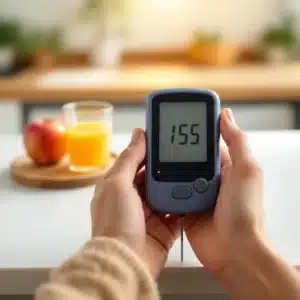The Ultimate Guide on How to Make a Digital Detox Work

You unlock your phone for a ‘quick look’ at your feed, and—poof—an hour has vanished down a digital rabbit hole. Sound familiar? That feeling of lost time, drained energy, and shattered focus is the hidden tax we pay for our hyper-connected lives. If you’re ready to stop the mindless scrolling and reclaim your mental health and productivity, it’s time to learn how to do a digital detox. This guide will give you the simple, actionable steps you need to disconnect from the noise and reconnect with yourself.
Step 1: Understanding Your Digital Overload
Before you can unplug, you have to get honest about just how plugged-in you really are. The very first step in making a digital detox successful is taking a good, hard look at your current habits. It’s so easy to lose hours to an endless feed of curated perfection, breaking news, and viral trends.
And let me be clear: this isn’t about guilt. It’s not a personal failing. These platforms are literally designed by experts to keep you scrolling. Our goal here is simply to be a detective for a few days—to gather some clues and see what’s really going on.
Recognizing the signs of digital overload is often the first breakthrough. Ask yourself, do any of these hit a little too close to home?
- Do you feel a bit antsy or restless when your phone is out of reach?
- Is checking social media the very first thing you do in the morning and the last thing you do at night?
- Do you find yourself comparing your life—your career, your home, your body—to people you see online?
- Has your ability to focus on one thing (like reading a book or even watching a full movie without looking at your phone) taken a nosedive?
- Do you ever find yourself “doomscrolling,” just consuming a firehose of negative news that leaves you feeling wiped out and hopeless?
If you nodded along to any of these, you’re in exactly the right place. This constant digital noise directly impacts your mental health. It fuels a culture of comparison and shatters our attention into a million little pieces, making it tough to be productive and truly present in our own lives.
Your Actionable Task: Conduct a 3-Day Digital Audit
To get a clear picture, you need some real numbers. Think of this as your starting line. For the next three days, you’re just going to be an observer. Don’t change a thing about your habits—just track what you do.
- Find Your Stats: Your phone already has the tools built-in.
- On an iPhone, head to
Settings > Screen Time. - On an Android, you’ll find it in
Settings > Digital Wellbeing & Parental Controls.
- On an iPhone, head to
- Track Key Metrics: At the end of each day, jot down these three numbers. Seeing them in black and white can be a powerful wake-up call.
| Metric | What to Look For |
|---|---|
| Total Screen Time | The total hours and minutes you spent looking at your device. |
| Top 3 Apps | Which social media apps are eating up the most of your day? Be honest! |
| Pickups/Unlocks | How many times did you instinctively reach for and unlock your phone? |
This data isn’t for judgment; it’s for awareness. Discovering you spend three hours a day on Instagram or unlock your phone 150 times can be the jolt you need to make a change. Now that you have a baseline, you’re ready to set some meaningful goals.
Your Action Plan: How to Start a Digital Detox Today
Feeling buried by the endless scroll? Ready to reclaim your time and attention from all that digital noise? The great news is you don’t have to go live in a cabin in the woods to do this. A successful digital detox is all about taking small, smart, and intentional steps. This is your practical guide on how to make a digital detox a reality, starting right now.
Let’s break it down into a simple, effective action plan.
1. Define Your “Why” and Set Clear Goals
First things first. Before you touch a single app, you need to know why you’re doing this. A vague goal like “spend less time on my phone” is almost guaranteed to fail. Why? Because it has no heart. Your “why” is what you’ll hang onto when that powerful urge to scroll strikes.
So, get specific.
- Is it to be more present with your family? Your goal could be: “No phones at the dinner table, period.”
- Is it to improve your sleep? Your goal could be: “No screens for one full hour before I get into bed.”
- Is it to finally finish that book on your nightstand? Your goal could be: “I’ll swap 30 minutes of evening scrolling for 30 minutes of reading.”
Write down one or two crystal-clear, achievable goals. This immediately reframes the detox from a punishment into a positive step toward something you genuinely want.
2. The Great Notification Purge
Think of notifications as a needy toddler constantly tugging on your sleeve. “Look at me! Look at me!” They are precision-engineered to shatter your focus and drag you back into an app.
It’s time to silence them.
I mean it. Go into your phone’s settings right now and disable all non-essential notifications. Be ruthless. You don’t need a pop-up for every ‘like’ on Instagram or a buzz for every breaking news story. Keep the true essentials—phone calls, messages from key people—but turn off the rest. This one simple act puts you back in the driver’s seat.
3. Create Tech-Free Zones and Times
Your environment is everything when it comes to habits. If you make it easier to disconnect, you will disconnect. By setting up a few simple rules for certain places and times, you make it almost automatic.
- The Bedroom: This is the big one. Your bedroom should be a sanctuary for rest, not for late-night Twitter debates. Buy a cheap physical alarm clock and start charging your phone in another room overnight. Game-changer.
- The Dinner Table: Make meal times a sacred space for actual conversation, free from dings, buzzes, and interruptions.
- Scheduled “Offline” Blocks: Put it in your calendar! Seriously. Schedule offline activities just like you would a work meeting. It could be a 20-minute walk around the block (phone left at home), a dedicated hour for a hobby, or a weekend morning committed to being device-free.
4. Curate Your Feeds and Delete Mindless Apps
Finally, let’s do a little digital spring cleaning. Unfollow accounts that make you feel anxious, envious, or just plain drained. The whole point is to make your social media a more positive and intentional space if—and when—you choose to visit.
Next, take a hard look at your home screen. Which apps do you open on autopilot when you’re bored or waiting in line? For many of us, it’s TikTok, Instagram, or Facebook. Move these apps off your main screen and into a folder. Better yet, try deleting the one you use most mindlessly. You can always reinstall it later! This tiny bit of friction is incredibly effective at breaking that reflexive, unintentional scrolling habit.
After the Detox: Building Healthier Long-Term Digital Habits
You did it! Take a moment to appreciate that. You took a step back from the noise, and the world didn’t fall apart. In fact, you likely feel more present, focused, and calm. But the real work starts now: how do you re-enter the digital world without getting sucked right back into the vortex?
The goal was never to abandon technology forever. It’s about shifting from being a passive consumer to an intentional user. This is your chance to build a new relationship with your devices—one that’s on your terms. Here’s how to make those detox benefits last.
Create Your New Rules of Engagement
Before you dive back in, decide what a healthy relationship with technology actually looks like for you. This isn’t about restriction; it’s about empowerment.
- Designate Tech-Free Zones and Times: Make those temporary rules permanent. Your bedroom is for sleeping. The dinner table is for connecting. You can also establish “digital curfews,” like putting your phone away an hour before bed and not touching it for the first hour you’re awake.
- Curate Your Feeds Ruthlessly: Remember, you’re the boss of your own feed. As you re-engage, be quick to unfollow any account that makes you feel anxious, inadequate, or just… blah. Fill your feed with things that actually inspire you, teach you something, or make you smile.
- Turn Off Non-Essential Notifications: The pings and pop-ups are designed to work against you. Keep them off. Go back into your settings and make sure that only the most essential communications can interrupt your day. You decide when to check an app; don’t let the app decide for you.
Practice Intentionality Before You Pick It Up
If you take only one new habit from this entire guide, make it this one. It’s a game-changer.
Before your thumb even touches the screen to unlock your phone, just pause for a single beat and ask yourself one simple question: “Why am I picking up my phone right now?”
Do you have a clear purpose, like checking the weather, responding to a specific text, or looking up a recipe? Great, go for it. But if the honest answer is “I’m bored” or “I don’t know, it’s just a reflex,” take a breath. See if there’s something else you could do instead. That tiny pause is everything. It breaks the cycle of mindless consumption and puts you firmly back in the driver’s seat, ensuring your digital detox creates lasting, positive change in your life.
Taking on a digital detox is one of the most powerful things you can do for your time, focus, and overall well-being. By putting these strategies into practice—from setting clear boundaries to finding joy in offline hobbies—you can build a healthier, more balanced relationship with technology. Remember, the goal isn’t to demonize technology, but to control it so it doesn’t control you. Start small, be patient with yourself, and enjoy the incredible clarity and peace that comes with reconnecting to what truly matters. You’ve got this.
FAQ
I spend hours on social media without even realizing it. How can I even begin to cut back?
I get it, the scroll-hole is real! The key is to start small. Don’t try to go from three hours a day to zero. Instead, try turning off notifications for just one app. Or challenge yourself to keep your phone out of the bedroom. Small, specific goals are much easier to stick with.
What even is a “digital detox” and why should I care if I’m using social media a lot?
Think of it like a “reset” button for your brain. A digital detox is simply a period of time where you consciously reduce your use of digital devices. It’s important because that constant stream of information can seriously chip away at your focus, disrupt your sleep, and contribute to feelings of anxiety and comparison.
I feel anxious when I’m not checking my phone. How do I overcome that fear of missing out (FOMO)?
That anxiety is completely normal—it’s what the apps are designed to create! The best way to fight FOMO (Fear of Missing Out) is to create JOMO (the Joy of Missing Out). Fill that time with engaging offline activities you truly enjoy. The more present and satisfied you are in your real life, the less you’ll worry about what you’re missing online.
Is a digital detox about quitting social media forever, or just taking a break?
It’s definitely not about quitting forever (unless you want to!). It’s all about taking a strategic break to recalibrate your relationship with technology. The goal is to return to it on your terms, not the app’s, using it as a tool instead of letting it use you.
What are the real benefits of doing a digital detox, beyond just having more free time?
Oh, it’s so much more than just getting time back! People often report a huge improvement in their ability to focus on a single task—like reading a book or having a deep conversation. Other major benefits include better sleep, lower stress levels, and a much stronger sense of connection to the people and the world right in front of you.
Scientific References
- The Digital Diet: A Randomized Controlled Trial of a Digital Detox Intervention to Reduce Problematic Smartphone Use
- Digital Detox: A Systematic Review of the Effects of Digital Detox Interventions on Well-being and Mental Health
- Exploring the Benefits of Digital Detox and Its Impact on Mental Well-being: A Qualitative Study
- [Association Between Social Media Use and Symptoms of Depression and Anxiety in Adolescents: A Meta-Analysis](https://jamanetwork.com/journals/jama Network Open/fullarticle/2785307)
- The Impact of Screen Time on Sleep Quality in Adults: A Systematic Review


